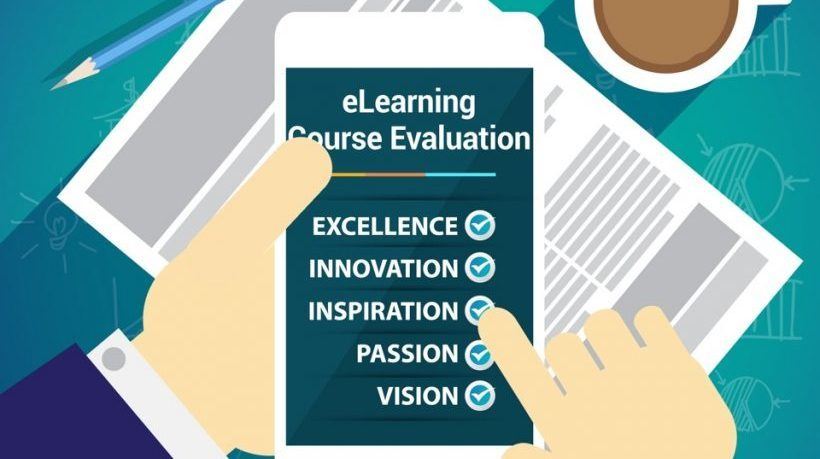Measuring The Success Of An eLearning Program
eLearning has become a potent tool in the fast-paced education and training environment, revolutionizing how we learn new information and skills. Education is now more readily available, flexible, efficient, and individualized, thanks to the digital transformation of learning. Assessing these programs' effectiveness is becoming increasingly crucial as eLearning plays a significant role in education, professional development, and corporate training.
Due to technological advancements, shifting learning preferences, and the need for accessible, on-demand education, eLearning has significantly increased in popularity in recent years. It provides flexible scheduling options and individualized educational opportunities. Strong evaluation processes are crucial to determining the impact and effectiveness of eLearning programs.
The various methods, KPIs, and best practices for assessing the success of an eLearning program are all covered in this article. It offers a thorough manual to assist institutions and organizations in evaluating the success of their digital learning initiatives, setting specific goals, and calculating Return On Investment (ROI). The manual gives people the skills and knowledge necessary to maximize the benefits of eLearning while coordinating it with organizational or educational goals.
Setting Clear Objectives In eLearning Evaluation
A precise and well-defined set of objectives is the first step in any eLearning program's success. These goals form the cornerstone upon which the entire program is developed and assessed. Setting specific goals is crucial for directing Instructional Design and gauging the program's success. In this section, we'll look at the critical procedures for establishing precise eLearning evaluation objectives:
Defining Specific Learning Objectives
Determining specific learning outcomes is the first step in creating clear objectives. What do you hope learners will know, understand, or be able to do once they have finished the online course? Here, specificity is crucial. Explicit objectives should be used instead of general ones.
Aligning Objectives With Organizational Goals
Although individualized learning objectives are crucial, they should align with more general organizational or academic pursuits. Your eLearning program should further your organization's overall mission and goals. For instance, if a company wants to boost worker productivity, its eLearning objectives might concentrate on enhancing pertinent abilities or information.
Creating Measurable Outcomes
Evaluation requires measurable results to determine goal achievement. Assessment tools, tests, tasks, and performance reviews that meet objectives can do this. Measuring outcomes and aligning learning objectives with organizational goals helps evaluate eLearning initiatives.
Analyzing Learner Engagement In eLearning Evaluation
Learner engagement is crucial to the success of any eLearning program. It shows how enthusiastically and actively students participate in learning, significantly affecting how well the program functions. eLearning programs employ various tactics and metrics to gauge and enhance learner engagement. The primary aspects of learner engagement analysis in eLearning evaluation that we will cover in this section are as follows:
Measuring Participation Rates
eLearning programs succeed when learners are engaged because they show how much they care and how they work. Tracking participation rates lets you make changes to get more students involved and keep them interested.
Analyzing Course Completion And Dropout Rates
Course completion and dropout rates show how happy and engaged learners are. High dropout rates show problems with how people are taught or how they are engaged. If you want to improve engagement and retention, you have to look into why people quit.
Assessing Learner Feedback And Surveys
Understanding how engaged students are and improving eLearning requires direct feedback from students. Using data to identify materials or activities that students enjoy is an excellent way to assist them in improving.
Assessing Learning Outcomes
A key part of figuring out how good an eLearning program is is tracking how students change over time. Keeping track of progress helps determine how well the program works and guides its ongoing development. This article looks at two important aspects of eLearning evaluation and progress tracking:
1. Implementing Pre- And Post-Assessment Evaluations
Pre- and post-assessment tests are essential for tracking progress in eLearning programs. Before starting the program, learners take pre-assessments to assess their existing knowledge and skills. After the program, students are given tests to evaluate their learning progress.
Quantitative evaluation of eLearning success involves comparing pre- and post-assessment results. Scores that significantly change from pre-test to post-test indicate the learning of new information or skills, indicating the program's progress and areas for improvement.
2. Identifying Trends And Patterns
Monitoring student progress over time can reveal trends and patterns in learner behavior. Educators can provide specialized support and interventions by identifying these patterns. Identifying broader trends, such as demographic changes or seasonal engagement variations, can guide decisions on course updates and changes.
eLearning evaluations, pre- and post-assessment evaluations, learning analytics, dashboards, and identifying trends and patterns in learner behavior are essential for tracking progress, enhancing learner outcomes, and preserving eLearning programs' efficacy and relevance. These resources allow teachers to adapt their methods and improve the learning environment. It can be done to meet the needs of students pursuing affordable online bachelor degree programs or other fields of study.
Tracking Progress Over Time In eLearning Evaluation
Monitoring learner progress over time is important in figuring out how well eLearning programs work. This ongoing monitoring allows teachers and administrators to determine how well the program works and make data-based decisions. Here are the most important parts of eLearning evaluation for tracking change over time:
1. Implementing Pre- And Post-Assessment Evaluations
Assessments are essential for tracking an asynchronous course development, assessing students' knowledge and abilities before and after the course. Comparing pre- and post-assessment results provides quantitative knowledge acquisition and skill development data. High post-test scores indicate program goals were met.
2. Utilizing Learning Analytics And Dashboards
Learning analytics and data dashboards track and analyze learner engagement, course material interaction, module time, and quiz performance in real time. These tools enhance eLearning processes by identifying patterns, implementing targeted interventions, and ensuring fruitful learning experiences for students.
3. Identifying Trends And Patterns
Tracking progress helps educators identify learner performance and behavior trends, identify learners excelling or struggling, and provide targeted support. It also helps adapt eLearning programs to evolving needs and preferences, such as changes in engagement levels or demographic variations.
Evaluating Instructor Effectiveness In eLearning
Instructor effectiveness is a pivotal factor in the success of eLearning programs. While technology is central to delivering content, instructors remain crucial in guiding learners, fostering engagement, and facilitating meaningful interactions. Here, we explore critical considerations for evaluating instructor effectiveness in the context of eLearning:
Reviewing Instructor Feedback And Ratings
An instructor's effectiveness assessment relies on student feedback and ratings, which reveal communication, responsiveness, and overall effectiveness. Positive feedback validates effective teaching strategies, while constructive criticism informs improvements and adjustments. To maintain high-quality eLearning experiences, instructors and students must maintain ongoing feedback loops.
Analyzing Instructor-Led Discussions And Interactions
In eLearning environments, it's essential for engagement and learning to happen through instructor-led discussions and interactions. It is essential to evaluate how well these interactions work. Educators can look at the following things:
- Frequency and timeliness
- Depth of engagement
- Personalization
- Encouraging participation
These elements can be used to assess the instructor's aptitude for creating a welcoming and intellectually stimulating online learning environment.
Ensuring Alignment With Instructional Objectives
eLearning program instructors must align instruction methods with learning objectives to ensure effective strategies, evaluations, and interactions. Regularly reviewing course materials and activities helps maintain alignment. Working with Instructional Designers and developers can improve alignment and keep educational objectives at the forefront.
Gathering Feedback
Practical eLearning program evaluation is based on feedback. Input from students, teachers, and administrators can help identify the program's strengths and weaknesses and inform significant improvements. In this section, we look at the value of getting input from stakeholders when evaluating eLearning programs and the procedures involved:
1. Learners
Tracking progress helps educators identify learner performance and behavior trends, identify learners excelling or struggling, and provide targeted support. It also helps adapt eLearning programs to evolving needs and preferences, such as changes in engagement levels or demographic variations.
2. Instructors
Online learning relies on the teacher's role as a facilitator who engages students, provides information, and leads discussions. Online learning systems help instructors access textbooks, technology resources, and administrative help while guiding students on test performance and engagement.
3. Administrators
The administrative staff is in charge of managing and delivering eLearning programs. Their opinions are critical when figuring out how to run the program. Administrators can find problems with operations and suggest ways to run programs better.
Addressing Concerns And Making Improvements
A practical evaluation of an eLearning program needs to look at the feedback, find common themes, and develop action plans for improvement. Priorities must be set on things that significantly affect learning outcomes.
Demonstrating Responsiveness
Transparency and responsiveness are crucial when evaluating an eLearning program. Tell others what you learned from analyzing feedback and what you did to fix problems. It shows that you care about your stakeholders and encourages a culture of continuous improvement. Ask for more feedback often to see how your changes are working and to find new ways to improve. Learners must feel like their ideas are taken seriously and their problems are solved quickly.
Continuous Improvement Strategies
Successful eLearning programs focus on constant improvement. eLearning providers can improve the caliber and efficacy of their courses by methodically incorporating feedback, establishing goals, and encouraging a culture of growth. Here, we examine essential tactics for eLearning continuous improvement:
Incorporating Findings Into Program Enhancements
Feedback and information from students, teachers, and administrators are essential for improving a program. It's important to look at this feedback in a planned way and find the places that need to be fixed. Make the following moves:
- Iterative content development
Change the course based on what students say. Try to find materials that are easy to understand, interesting, and fit your learning goals. - Enhancing User Experience
Address any technical problems or difficulties raised by students. Enhance the usability, accessibility, and functionality of the eLearning platform.
Adapting Instructional Strategies
Setting Goals for Future Iterations
Continuous improvement involves setting clear, measurable goals for future iterations of the eLearning program. Data and feedback should inform these goals and aim to enhance specific aspects of the program. Consider the following approaches:
- Outcome improvement
Make plans to increase specific learning outcomes, such as higher pass rates, learner engagement, or lower dropout rates. - Technological advancements
If technology is a crucial program component, establish goals for adopting new tools or platforms that enhance the eLearning experience. - Efficiency and effectiveness
Seek opportunities to streamline administrative processes, reduce costs, or optimize resource allocation while maintaining or improving program effectiveness.
Wrapping Up: Elevating eLearning Through Evaluation
Evaluating the success of eLearning programs is an ongoing journey toward excellence in the ever-evolving education landscape. These best practices ensure that educational objectives are met, students are actively engaged, and continuous improvements are made. eLearning works best when constantly evaluated because learners must identify new improvement areas essential to change programs and improve learning.
Schools can improve content, make the most of technology, and increase teacher effectiveness by gathering and analyzing data. This data-driven approach can improve eLearning results by improving instructors, technology, and content.
In conclusion, determining if an eLearning program is successful is a process, not a final destination. It is an acknowledgment of the power of education to change people's lives, a commitment to excellence, and a commitment to meeting the needs of learners. Let data, insights, and a love of learning be our guideposts as we move through the ever growing eLearning landscape. Together, we can take online education to new heights and create a better future for all students.








